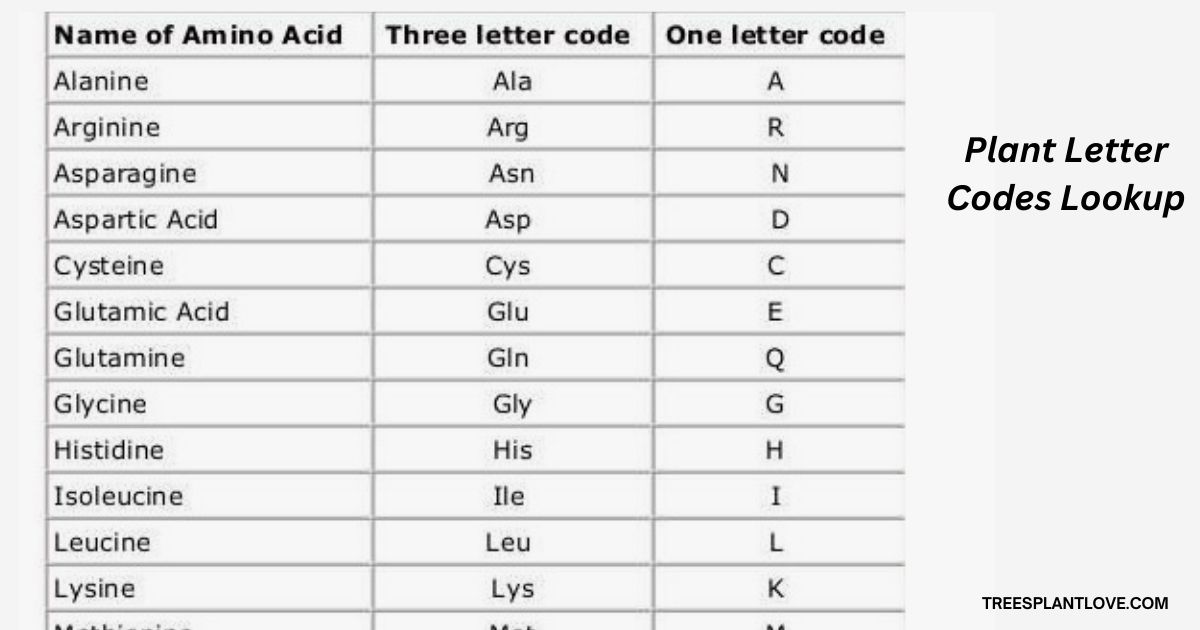
Plant Letter Codes Lookup: How to Identify Plants with Simple Codes
Plant Letter Codes Lookup: When navigating the world of plants, whether for gardening, research, or professional horticulture, understanding plant letter codes is essential.
These codes serve as a shorthand system, making plant identification, categorization, and communication easier. If you’re interested in gardening, botany, or landscaping, knowing how to use and interpret these letter codes is a valuable skill.
What Are Plant Letter Codes?
Plant letter codes are alphanumeric sequences used to represent specific plants, cultivars, or varieties. These codes serve as abbreviations that provide useful information about a plant’s characteristics, such as its genus, species, variety, and sometimes its cultivar. They are particularly helpful in cataloging plants in nurseries, garden centers, academic research, and botanical databases.
Some common sources of plant letter codes include plant catalogs, databases, and plant identification systems like the USDA Plant Database or the International Plant Names Index (IPNI).
Types of Plant Letter Codes
- Genus and Species Code: These codes typically consist of the first few letters of the plant’s scientific name. The first letter represents the genus, and the next letters represent the species. For example, “C. sinensis” refers to Camellia sinensis, the plant from which tea is derived.
- Variety and Cultivar Codes: When referring to different varieties or cultivars of a species, additional codes are added. For example, the code “C. sinensis var. assamica” indicates a specific variety of Camellia sinensis, known for its larger leaves.
- Hybrid Codes: Some plants are hybrids, the result of crossing two or more species. In these cases, hybrid codes may be used, which often include a “+” sign between the genus names. An example is F1 hybrids where plants like F. x intermedia combine traits from different species.
- Regional or Commercial Codes: In some cases, plants are assigned letter codes based on their geographic region or the nursery’s commercial coding system. For instance, “AUS” might denote an Australian variety, or “PT” might refer to a type of perennial plant.
Why Are Plant Letter Codes Important?
- Efficiency in Communication: Plant letter codes are useful in both academic and practical horticulture settings for efficient communication. By using standard codes, professionals can quickly share information about plants without needing to spell out lengthy Latin names.
- Organization in Databases: For those involved in plant cataloging, such as botanists or database managers, using letter codes allows for a more organized and structured way of referencing plants. It also simplifies searching for plants within large botanical databases.
- Streamlined Labeling: For nurseries and garden centers, plant letter codes provide a compact way to label plants on tags, in inventories, or on plant lists. They help with stock organization and improve the speed at which customers or workers can identify plants.
- Research and Conservation: Letter codes help researchers study plant species across different regions and databases. Conservationists can use them to track plant varieties, especially when monitoring endangered species or conducting plant restoration projects.
How to Lookup Plant Letter Codes?
If you’re interested in finding a specific plant’s letter code, several methods can be used. Here are a few ways to look up plant letter codes efficiently:
- Botanical Databases: Websites such as the USDA Plant Database, IPNI, or the Royal Horticultural Society (RHS) offer extensive databases where you can search for plants by their scientific names or letter codes. These databases provide accurate and up-to-date information on plant species, hybrids, and varieties.
- Plant Catalogs: Many nurseries, garden centers, and horticultural companies publish catalogs that include plants with their respective letter codes. These catalogs often list plants by category, genus, species, or even by their letter code.
- Mobile Apps and Online Tools: A variety of plant identification apps and tools allow you to search for plants using letter codes or other identifiers. These apps also allow you to scan or take pictures of plants, helping you identify them on the go.
- Printed Guides and Books: Many printed gardening and botanical guides include a section that lists plant letter codes alongside their corresponding plants. These can be found in specialized reference books and even some gardening manuals.
How to Read Plant Letter Codes
Understanding how to read plant letter codes is key to using them effectively. Here’s a quick breakdown of how to interpret these codes:
- Genus and Species: The genus is always written with the first letter capitalized, while the species is typically lowercase. For example, Acer rubrum refers to the Red Maple tree, where Acer is the genus and rubrum is the species.
- Cultivar or Variety: Cultivars and varieties are typically indicated with “cv.” for cultivar or “var.” for variety, followed by the specific name. For instance, Rosa cv. Peace refers to the cultivar Peace of the rose species.
- Hybrids: Hybrids are often denoted with an “×” symbol or a plus sign (+). An example would be Ficus × elastica, the hybrid rubber tree, combining species from the genus Ficus.
- Regional Codes: Sometimes plants may also have a regional code indicating their origin, such as “US” for American species or “EU” for European varieties.
Conclusion
Plant letter codes are a crucial tool for gardeners, botanists, and horticulturists to navigate the vast world of plants. Whether you’re seeking a specific species for your garden, researching plant genetics, or categorizing plants for commercial purposes, these shorthand codes simplify and streamline the process.
By understanding how these codes work and knowing where to look them up, you can enhance your gardening knowledge and gain a deeper understanding of plant taxonomy.

Leave a Reply